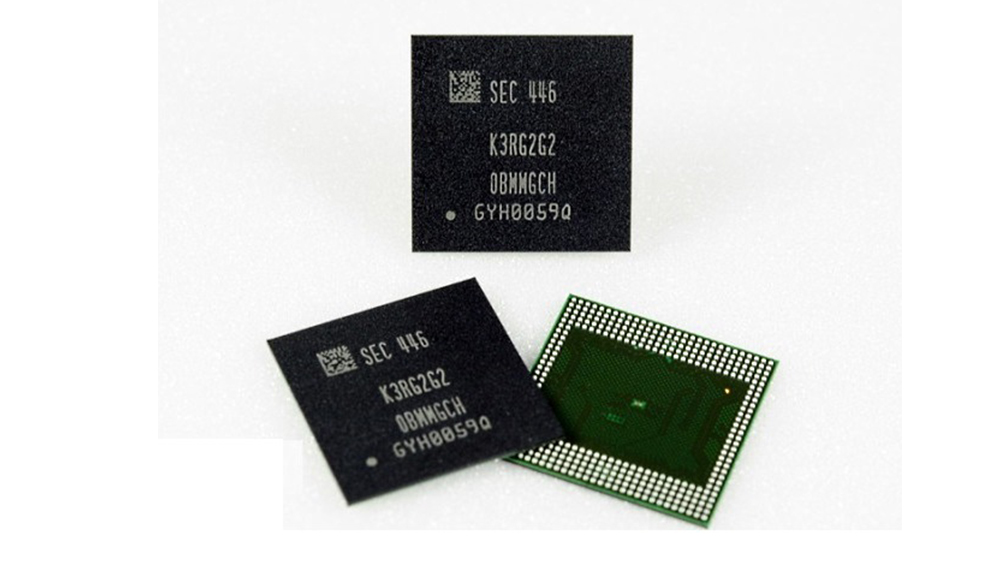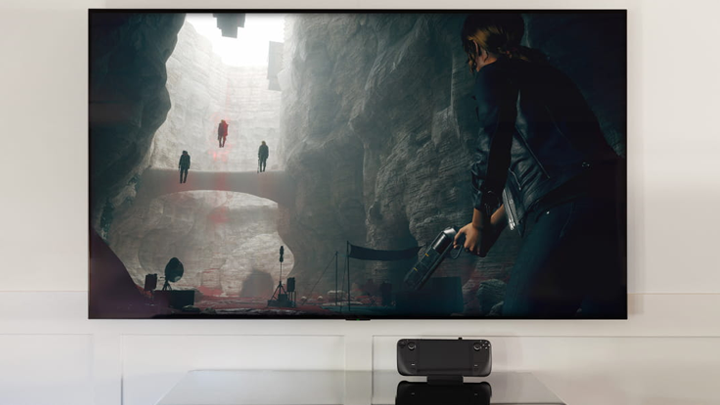With the recent announcement of the Steam Deck by Valve, people have wondered which model they should choose? The biggest difference between the cheaper and more expensive models is the type of storage they use. The cheaper model comes with eMMC, while the more expensive models come with an NVMe SSD. So what is the difference between the two types of storage, and is it enough to justify spending on the more expensive models? First, we have to understand what these types of storage are.
The most common form of storage we see these days when purchasing new gadgets like laptops is SSDs. Although this type of storage has been around for decades now, one of the things that were difficult about them is that they didn’t come in large storage options. Nowadays, SSDs have storage capacities that match or exceed hard disk drives, for a cost, of course.

SSDs or Solid State Drives are called that for a specific reason. They don’t rely on moving parts or spinning disks as hard disk drives do. Instead, data is saved to a pool of flash memory or NAND flash. NAND is made of floating-gate transistors designed to remain in their charge state even when not powered up. This makes NAND a type of non-volatile memory. And because SSDs have no moving parts, they can operate at speeds much faster than those of a typical HDD. Speaking of non-volatile memory, the newest SSDs are NVMe SSDs or Non-volatile Memory Express SSDs. To make the long story short, NVME SSDs are smaller and much faster than their traditional SSD counterparts but have the same concept of technology as well. They don’t use the traditional ATA interface that the old SATA SSDs use. Instead, they use the faster PCI Express lanes that your motherboards have to achieve faster speeds.
SSDs use less power than the old hard disk drives, which saves battery power when it comes to laptops. They also are way faster, smaller, and more reliable than any other storage option. In addition, they have very fast read and write speeds that can be important if you guys are also into gaming as you can load games faster.
Lastly, we have eMMCs which mean embedded multimedia cards. This type of memory is mostly used in phones and tablets. However, some also use this in lower-powered or lower-spec laptops.

Embedded because eMMCs are baked onto the motherboard of the smartphone or the laptop. An eMMC is actually a multimedia card that also uses flash memory as SSDs do.
eMMCs are slower than SSDs, though, as they don’t have enough power to deliver faster speeds. They are faster than old hard disk drives, though. The convenience of eMMCs is that they are small and can come in different sizes, from 32GB to 128GB or 256GB sizes. Unfortunately, devices with eMMCs aren’t upgradeable as storage is literally stuck to the motherboard.
The advantage of eMMCs is that you save costs as they come in cheaper than SSDs, and you can still have decent storage sizes. So they’re cheap, still better than hard disk drives, and good for people on a budget.
Chromebooks, cheaper laptops, the Nintendo Switch, and the upcoming Steam Deck (the entry-level version) uses eMMC.
What does this mean for consoles and other devices like the upcoming Steam Deck?

Companies these days release devices with eMMC storage to cut costs and sell the product at lower prices. This is not to say that it is an inferior product when you get a version with an eMMC. On the contrary, these are still fast and still uses the same other components like the GPU, CPU, etc. It’s just that it won’t be as fast as a dedicated SSD. Like for example, with the Nintendo Switch, a lot of people complain about load times on the device and the limited amount of storage it has and that you really have to buy a high-speed SD Card to have your entire game library on it, not unless you want to keep on installing and uninstalling games.
So which one should you choose?
If you’re building a computer or buying a laptop, an SSD is definitely necessary these days, as just having your OS in an SSD makes booting your computer instantaneous. In addition, everything will be faster when using an SSD. Of course, if you choose a device with an option between an eMMC or an SSD, you should first consider your budget. But if that is not a concern, always go for the SSD version to give you better speed and larger storage.

But for the Steam Deck? If you’re just a casual gamer and you aren’t too critical about loading times and play a handful of games, then the eMMC version or the entry-level Steam Deck is perfect for you. You can always upgrade your storage space using an external SD Card. Many more hardcore players would gravitate towards the version with an SSD for faster load times and larger storage. If you are looking into feeling that PC-like experience on a handheld, then the best possible way to do that is to get the version with the NVMe SSD. If indie games and easier titles are your thing, then the eMMC route is the way to go, as it will save you a lot of money in the process.
The great thing about the Steam Deck is that they just announced that all three models have an expandable M.2 2230 NVMe slot. This means that even if you buy the cheaper eMMC version now, you still have an option to buy a larger NVMe SSD to upgrade your console in case you need the space to install those bigger games or have run out of storage on your 64GB eMMC. This is great news for people who don’t have the budget yet to go all out and buy the higher models. However, do note that M.2 2230 NVMe’s are much more expensive than a regular NVMe SSD.
What does this mean for future consoles?

Sometime soon, I believe most new consoles or specifically handheld consoles, will use NVMe SSD solutions as these are becoming cheaper and getting smaller. They offer more robust storage sizes that if you are planning to play AAA titles on your handheld device, you have no choice but to get a device with a larger SSD storage. I don’t think you’re ever going to get a game like Red Dead Redemption 2 on an eMMC device as it already is a 150GB download in the first place, and the large open-world game will really push an eMMC card to its read/write limits.
eMMC cards will always have a place in devices like smartphones or even handheld consoles, but with the advent of an idea or device like the Steam Deck, which theoretically wants to bring PC gaming to your hands, then NVMe SSD cards are the way to go.

YugaTech.com is the largest and longest-running technology site in the Philippines. Originally established in October 2002, the site was transformed into a full-fledged technology platform in 2005.
How to transfer, withdraw money from PayPal to GCash
Prices of Starlink satellite in the Philippines
Install Google GBox to Huawei smartphones
Pag-IBIG MP2 online application
How to check PhilHealth contributions online
How to find your SIM card serial number
Globe, PLDT, Converge, Sky: Unli fiber internet plans compared
10 biggest games in the Google Play Store
LTO periodic medical exam for 10-year licenses
Netflix codes to unlock hidden TV shows, movies
Apple, Asus, Cherry Mobile, Huawei, LG, Nokia, Oppo, Samsung, Sony, Vivo, Xiaomi, Lenovo, Infinix Mobile, Pocophone, Honor, iPhone, OnePlus, Tecno, Realme, HTC, Gionee, Kata, IQ00, Redmi, Razer, CloudFone, Motorola, Panasonic, TCL, Wiko
Best Android smartphones between PHP 20,000 - 25,000
Smartphones under PHP 10,000 in the Philippines
Smartphones under PHP 12K Philippines
Best smartphones for kids under PHP 7,000
Smartphones under PHP 15,000 in the Philippines
Best Android smartphones between PHP 15,000 - 20,000
Smartphones under PHP 20,000 in the Philippines
Most affordable 5G phones in the Philippines under PHP 20K
5G smartphones in the Philippines under PHP 16K
Smartphone pricelist Philippines 2024
Smartphone pricelist Philippines 2023
Smartphone pricelist Philippines 2022
Smartphone pricelist Philippines 2021
Smartphone pricelist Philippines 2020